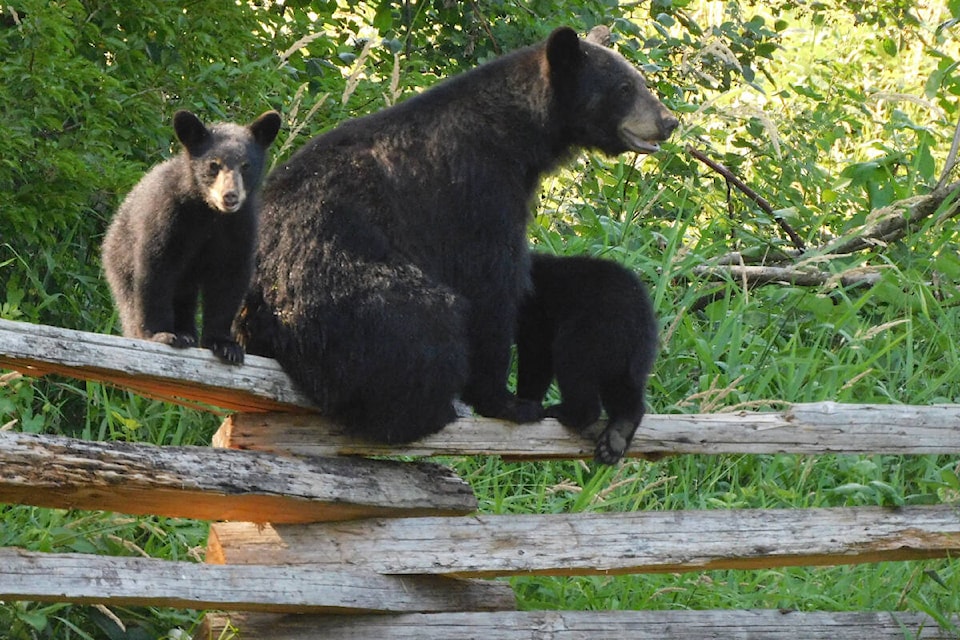by John Boivin
Local Journalism Initiative Reporter, Valley Voice
A garbage transfer facility in the north Slocan Valley is being fortified against wildlife after a trio of bears found it a handy source of food.
The animals showed up at the Rosebery transfer station this spring – they are suspected of visiting it in years past – and are accustomed to hanging around during operating hours, waiting for their food to be delivered.
“The issue is being caused by bears that have become habituated during the past several years and have recognized Rosebery as a food source,” says RDCK resource recovery team and operations supervisor Aimee Kootnikoff. “Based on staff observation and reporting, we have identified three individual bears.”
That’s caused some problems – and scares – for the staff managing the station, which is a holding area for local waste until it can be transferred to the regional landfill near Castlegar. The RDCK is taking steps to implement “long-term solutions,” says Kootnikoff.
“This includes bin upgrades and repairs, and ordering an electric fence, which is scheduled to be installed and operational by end of July,” she says. “In the meantime, site staff have been directed to take precautions, such as temporarily shutting down the site to keep themselves and our customers safe.”
Staff have also been equipped with air horns and bear spray, which hasn’t had to be used yet, says Kootnikoff. “Work is underway to increase security around the facility.”
She says even the steps they’ve already taken – including purchasing new secure containers – have reduced the problem somewhat.
While there hasn’t been an overwhelming invasion of bears reported in Slocan Valley communities, local WildsafeBC officials say the slow spring has delayed the bear’s usual early-season food supply, prompting a migration to lower elevations and into communities to find other sources.
Lower-elevation food sources like saskatoons and thimbleberry are about three weeks behind their usual development.
“However, many of these early season foods, such as dandelions, clovers and skunk cabbage, have been catching up and are now providing good food sources for bears,” says local WildSafeBC co-ordinator Cora Skaien. “Many of the higher elevation huckleberry and other berry-producing shrubs remain under snow, so their ripening schedule may potentially end up being delayed by a few weeks as well, but it really depends on the coming weeks.”
Skaien says they’re hoping there won’t be further cold snaps that would affect the development of berries and other foods in the sub-alpine.
“However, many of the higher elevation shrubs are normally still covered in snow around this time in a standard year, so hopefully we will not see too many delays in the alpine beyond a few weeks, and hopefully no reduction in crop yield,” says Skaien.
“We are hoping that with the green-up that has arrived the last few weeks, that bears will have enough food to last until the first berries ripen.”
No matter what the food situation turns out to be, WildSafeBC is still reminding people that prevention is the best defence against bear problems. Property owners should still keep their trash secure and sealed until collection, pick up windfall from fruit trees and dispose of it before bears can access it, bring in outdoor freezers, and consider electric fencing for both fruit trees and chicken coops.
